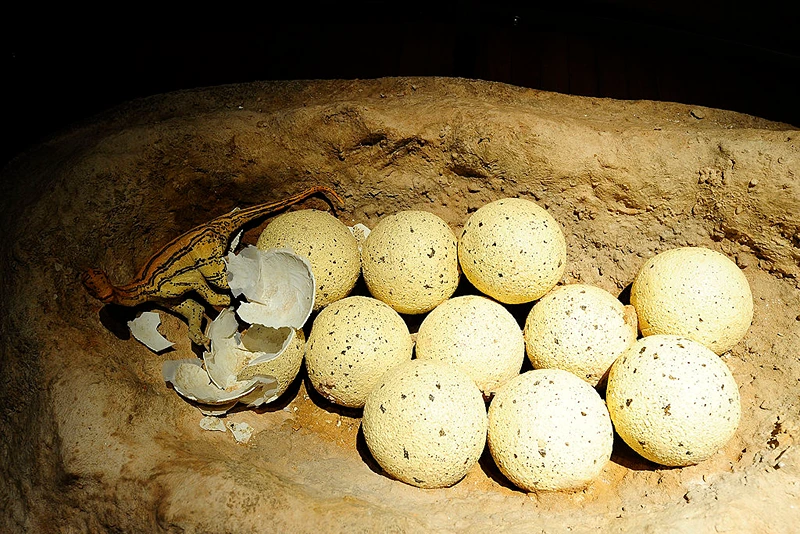

OAN Shannon Kelland
UPDATED 7:00 PM PT – Thursday, January 19, 2023
Paleontologists have made a rare discovery of a fossilized dinosaur hatchery that contained 92 nests and 256 eggs of titanosaurs in India.
A new study, published in the journal PLOS ONE, recorded evidence of six different types of fossilized eggs across the Lameta Formation. The fossils date to the Late Cretaceous period, and are thought to have been preserved under lava during the eruption of a volcanic area, the Deccan Traps.
This discovery adds weight to theories that there could have been more titanosaurs living in India than the three types that are currently known.
Titanosaurs is among the largest dinosaurs to have ever walked the earth and is believed to have measured over 37 metres long, or the same length as two bowling lanes.
The study examined the nests and eggs revealing intimate details about the lives of the large long-necked sauropods that lived across what is currently central India more than 66 million years ago.
The co-author and leader of the research team was Professor Guntupalli V.R. Prasad.
“Together with dinosaur nests from Jabalpur in the east and Balasinor in the west, the new nesting sites from Madhya Pradesh’s Dhar District cover an east-west stretch of about 1000 kilometers. This constitutes one of the largest dinosaur hatcheries in the world,” he said.
While the species is found all over the world, uncovering preserved eggs is very rare. It is difficult for researchers to directly link a type of egg to a type of dinosaur.
Researchers inferred many similarities between the species and birds. For example, from the close proximity of the nest’s researchers could deduce that the dinosaurs laid eggs together in colonies or rookeries.
Among the 256 eggs found at the site, one in particular caught the researchers’ attention. They believe it is an ovum-in-ovo egg, which is when one egg is found inside another. The egg appeared to show a layer of eggshell inside of it, with its shape suggesting that it had always been this way. This type of egg is only known of in birds, where they form under stressful conditions. It would be the first example of an ovum-in-ovo egg not only in dinosaurs, but reptiles as a whole, if confirmed.
Titanosaurs’ nesting patterns also shared characteristics with that of today’s birds and crocodiles.
The dinosaur is believed to be based on the physical characteristics of the nests, that they likely laid their eggs and then left the baby dinos. The even with the egg’s being unattended they would still need to be kept warm throughout an incubation period. In this way the Titanosaurs most closely related to turtles or crocodiles. Turtles bury their eggs under sand and crocodiles nest their eggs under rotting plant material instead of an open nest like a bird.
These theories are still being debated by scientists and have yet to be confirmed.





Be the first to comment